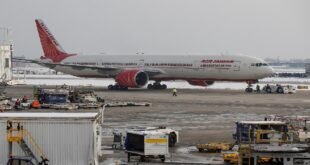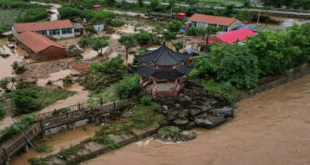12-07-2025
SIKASSO, MALI: The Kayes region, which borders Senegal and is vital to Mali’s economy, had remained largely untouched by the violence from armed groups that has rocked the country for several decades but that changed when armed men waged a string of coordinated attacks on military installations in several Malian towns last week, after which the country’s armed forces launched a counterattack that it said killed 80 fighters.
 The uptick in violent clashes between armed fighters and the Malian army who are being assisted by Russian paramilitaries known as the Africa Corps, comes as the country’s political future looks murky, experts say, with the military-led government seemingly determined to permanently extend its rule.
The uptick in violent clashes between armed fighters and the Malian army who are being assisted by Russian paramilitaries known as the Africa Corps, comes as the country’s political future looks murky, experts say, with the military-led government seemingly determined to permanently extend its rule.
For more than a decade, Mali has faced rebellions from separatist movements and armed fighters, including the two most active groups, ISIL affiliate, the Islamic State in the Greater Sahara (ISGS) and al-Qaeda-linked Jama’at Nusrat al-Islam wal-Muslimin (JNIM).
JNIM claimed responsibility for last Tuesday’s attacks, which Malian officials said targeted seven major towns in the west and centre; Kayes, Nioro du Sahel, Niono, Molodo, Sandare, Gogui and Diboli.
The group did not list any human or material casualties but its leader Iyad Ag Ghali said JNIM had taken total control of three enemy barracks and dozens of military positions.
At the same time, during the attack on Kayes town, three Indian nationals working at a cement factory were forcibly taken by gunmen as “hostages”, the Indian foreign ministry said on Wednesday, in an incident that could risk escalating the crisis beyond Africa’s Sahel.
This month’s attacks are also just the tip of the iceberg, as communities across Mali continue to be caught in the crossfire, at times to violent and even deadly ends.
Less than a fortnight earlier, on the night of June 18, areas in the centre of the country including Diallassago and Dianweli, were the scene of attacks in which at least 130 people were killed.
Before that, on May 23, an armed group attack on the Dioura military camp in the Mopti region killed 41 members of the Malian army.
 Security experts say the army is understaffed, despite the waves of recruitment drives over the last five years. This has left Mali vulnerable as it compromises efforts to rebuild military capabilities.
Security experts say the army is understaffed, despite the waves of recruitment drives over the last five years. This has left Mali vulnerable as it compromises efforts to rebuild military capabilities.
“The armed forces have shown a certain level of vigilance in the face of attacks,” said Moussa Dienta, who works for the Coordination of Associations for Peace and Development in Mali, a body that supports the country’s military transition.
He said that to support the army, communities in Mali should “make their contribution” by helping gather local “intelligence” that enhances their ability to do their work. “This will enable the army to remain the pillar of the nation.”
While some support the military’s efforts, others argue that they are not enough to contain the threat of the armed groups.
“No one is safe from the new terrorist threat posed by al-Qaeda and its affiliates in Mali,” said Jean Marie Konate, a community development expert with the Red Cross in the Kayes region, pointing to the hostage-taking of the Indian nationals last week.
“The assailants are determined to bite where it hurts, and foreigners will remain potential targets.”
India has urged the “safe and expeditious” release of the hostages, with its foreign ministry saying it “unequivocally condemns this deplorable act of violence”. (Int’l News Desk)
 Pressmediaofindia
Pressmediaofindia




